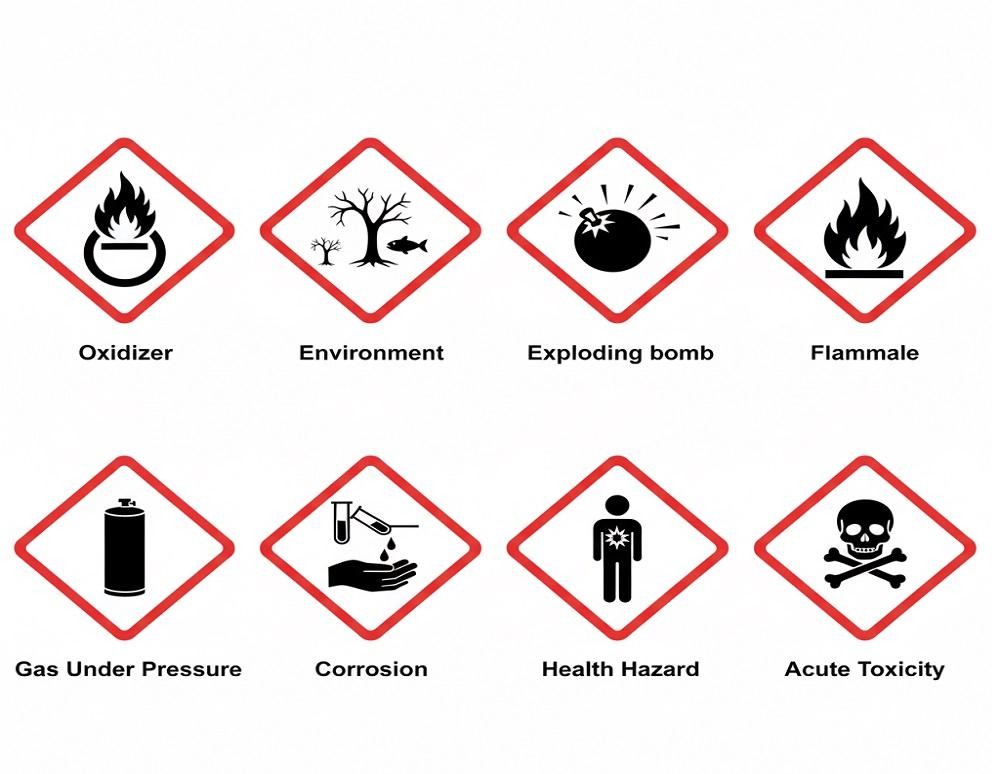In workplaces where you work with various chemicals, effective communication is crucial. You should know what to touch and what to avoid by looking at the chemical storage containers. This is where chemical labels help you by silently communicating the instructions and warnings needed while handling dangerous chemicals.
GHS labels (Globally Harmonised System) were invented to help every worker carefully handle chemicals without facing any risk. From workers to emergency responders, these labels are universally the same to understand the hazards associated with chemicals.
From manufacturing to laboratories, construction and transportation, these labels help you in being compliant and safe while handling different kinds of chemicals.
If you want to know about these labels, here is the blog that will give you the outline and make you aware of the importance of the symbols.
Elements of labels:
When you observe a label, you can observe components like:
- Product identifier
This is the name or code for the chemical substance that you are about to use. This information will help you to cross-check with the name present in the safety data sheet.
- Signal word
A signal word indicates whether the chemical is dangerous or a warning. It helps you to provide quick hazard recognition, helping you to identify the status of the chemical properties.
- Pictogram
The symbols on the labels are called a pictogram, where there will be a white background with a red diamond border. To illustrate, the symbol flames mean the chemical is flammable.
- Hazard statements
The label also contains standardised statements like ‘causes skin irritation’, etc., where you should pay heed while describing or using the chemical for work.
- Precautionary statements
There are also instructions on the label on how to store, use and dispose of the chemical without causing any harm to the surroundings. Sometimes, the label also includes first-aid guidance.
- Supplier information
Finally, the label consists of the supplier information like the name, address and contact details of the manufacturer and distributor.
Why these labels matter:
For the safe handling of hazardous chemicals, these labels matter to preserve the hygiene and safety of the workplace.
You can reduce accidents, exposure to harmful substances and long-term health risks and ensure worker safety in the workplace. Labels are also helpful in being compliant with regulatory rules and standards. In case any emergency arises, these labels offer vital information where you can minimise the after-effects in case of spills and accidents. As the labels are universally accepted, you don’t face any issues while transporting. They stand as a common language for chemical shipping and handling.
Though they seem small, these labels provide important information that helps in the proper handling of the chemical labels.
How To Use Hazchem Labels:
- Before taking the label for granted, you have to cross-check the data with the safety data sheet for detailed safety instructions.
- All the labels must remain intact and legible, which means you have to immediately replace damaged or faded labels with the new ones.
- You also have to train all the workers to understand the symbols properly and how to act during any emergency.
- Never tamper with or alter the label present on the container, as one small mistake could lead to disastrous situations.
- If the chemicals are transferred to a small container, you have to apply a secondary label. Never leave any container with any label, as it’s difficult to handle the chemical without proper information.
Final thoughts
Chemical labels are not just notices but stand as primary components in communicating proper information about the chemicals. By understanding the labels, you can protect your business workplace from unnecessary accidents and comply with regulations. Chemical labels are effective communication tools and ensure the safety of workers by standing as the first line of defence.
